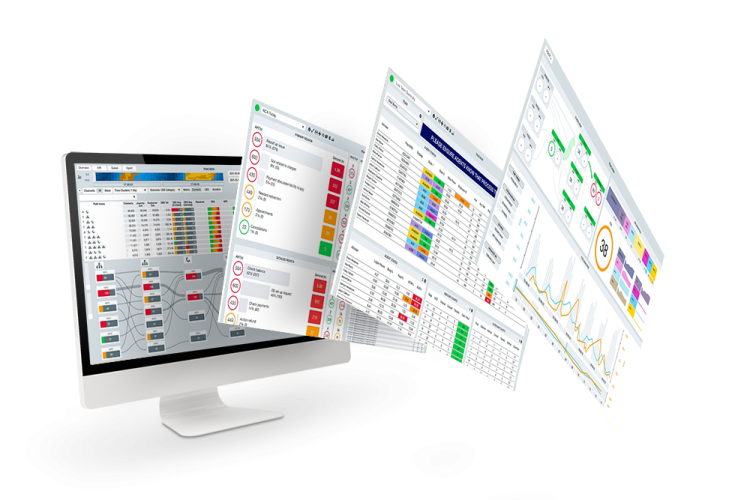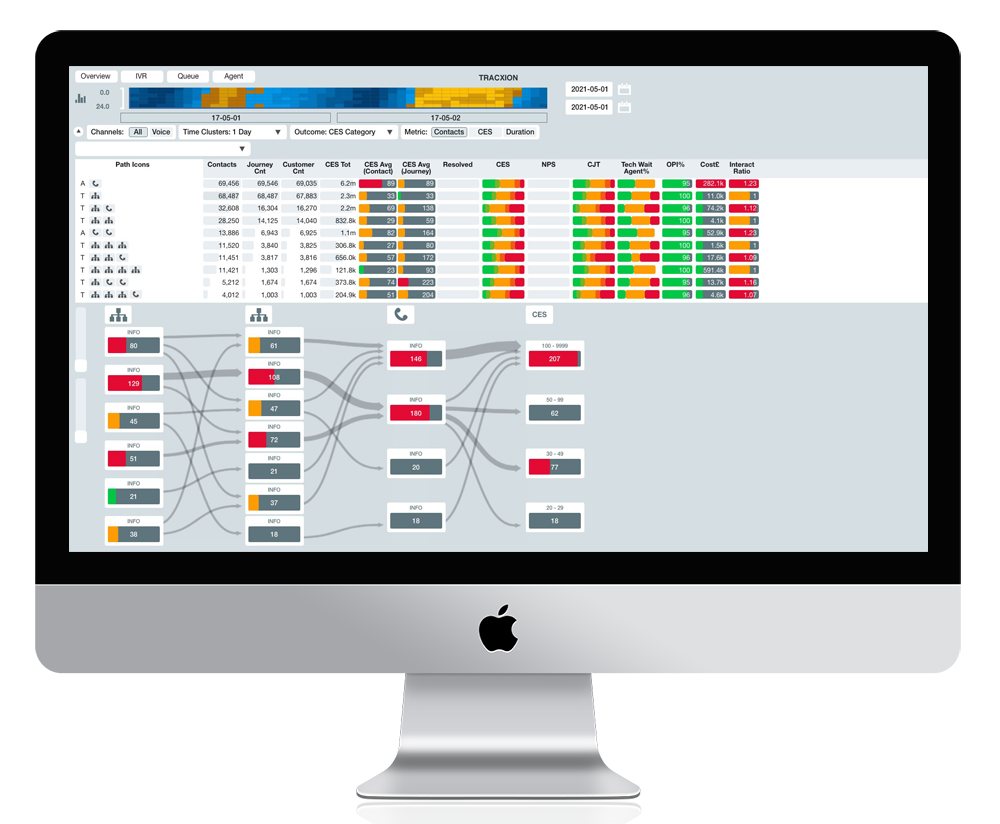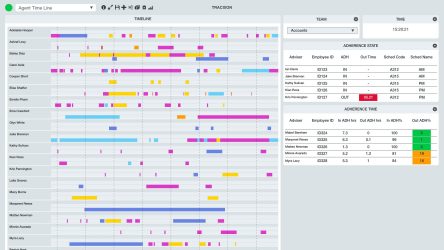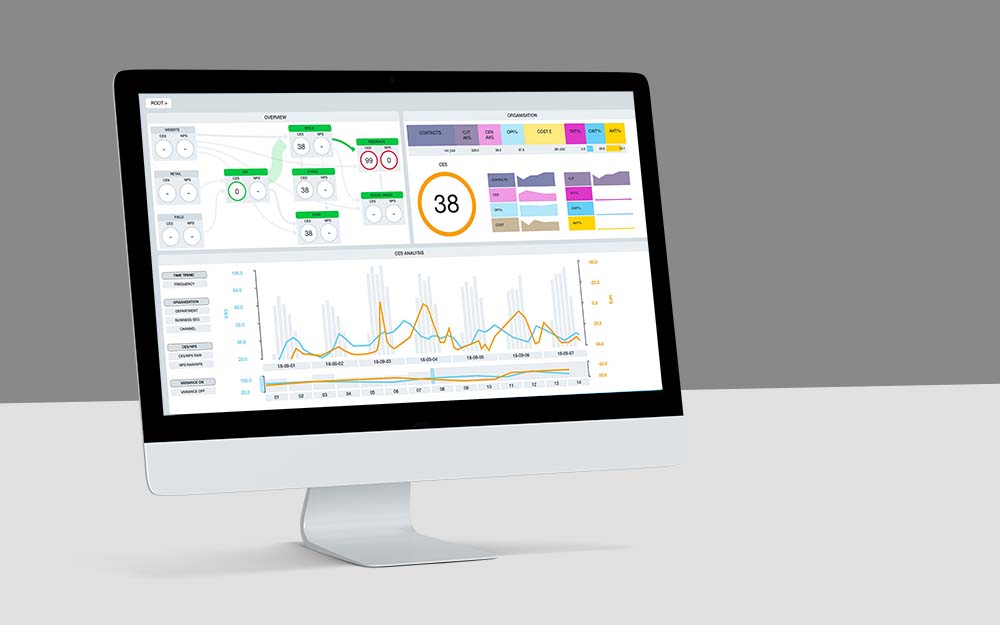Technology Principles
The solid foundations of our technology that everything is built on

Why are we unique?
Because we have embedded 6 core technology principles in our DNA
Click the links below to learn more about our technology principles
From data to insight
1. Real time data platform

Tracxion collects, processes, stores and shares data in real time – supporting any downstream data-consumption requirement.
This enables:
- data to be made available to any connected system or process instantly
- the current state of any contact or agent activity to be determined
2. Accurate data via event level collection

Tracxion collects event level data at the most granular level available (for instance ACD CTI).
Micro events such as:
– call hits queue / call hits routing point / call presented to agent / call placed on hold etc.
are all captured instantly with a timestamp.
This enables highly accurate detail level and summarised data to be curated to meet any real-time dashboarding and historical reporting requirement.

Example
An Insurance customer had a problem that Tracxion uncovered because it captures every event generated by the contact routing platform:
On the call ring event as a call was presented to an agent’s phone, some agents were quickly pressing Not Ready then Ready – which bounced the call back into the queue. In the MI generated by the switch the call was counted as handled by the agent but as it had no AHT it brought down their AHT average. We noticed this behaviour when agents were high against their AHT target, in effect they were doing this on a few calls to ‘game’ their AHT back to compliance. This behaviour was delivering really poor customer experience.
3. Normalised data

Event data can be collected from many different platforms but will be processed by Tracxion in real time to fit a standard normalised data model. The validation process deployed during an implementation ensures that each received event is understood and processed correctly to enable accurate calculations to be made.
This ensures not only that Tracxion can be used as ‘one version of the truth’ but that a heterogenous estate spanning different vendors’ technology can be managed and reported on correctly as one entity, as all the connected systems now render performance data in the same way and KPIs can be managed consistently across environments.

Example
A US telco customer installed a new 3rd party softphone against their Genesys Engage platform, however quickly noticed that performance data in their MI had suddenly changed. By analysing the detailed event level data collected by Tracxion we were able to discover that the softphone was driving the wrong events into MI, as Genesys was configured for its own softphone and not the 3rd party version. Once this was understood, Tracxion’s data collection software was amended to translate the events correctly, thereby rectifying the data issue.
4. New inter-related data created

The relationship between events is created in real time as data is collected in Tracxion, not post-processed after the event using fuzzy logic – this avoids the business making critical decisions on flawed data.
For example, when an outbound call occurs whilst an inbound call is on hold, the outbound activity is related to the inbound activity (associated outbound) and highly accurate handle time and workload data is created, removing the normal blind spots.
Where the outbound contact is a consult call to a colleague, insight about how much time agents spend queueing and in conversation with each other (and not directly supporting the customer) is surfaced. This allows a determination of “unnecessary contact” to be made which drives behaviour, knowledge, process and automation interventions, improving performance at reduced operational costs.

Example
A telco customer had forecast a resource deficit and were planning to recruit an additional 1000 new agents into their frontline customer service organisation – by looking at Tracxion’s associated outbound data we were able to show the client that the problem was due to shortfalls in resourcing in the second line support queues, and could be solved by employing in the region of 200 agents across 3 of their support teams, without the need for more frontline support.
5. Context data added for 3D insight

Additional relevant data can be collected by Tracxion to provide context for 3D analysis. Understanding contact performance at the appropriate level enables a true analysis of what happened and gives management the knowledge to make appropriate interventions.
For example, understanding:
– calls by queue by reason, or / calls by queue by outcome, or / calls by queue by sentiment, or / calls by queue by call-back etc
enables proper analysis and reveals the hidden side of performance.
Just relying on analysis of ‘calls by queue’ risks not understanding where significant problems occur, such as where agents have handled a higher proportion of more complex calls and would normally be on special measures for high AHT, 3D analysis means that their call performance can now be understood in the context of their actual call mix.
Forecasting demand at the context level allows for more accurate planning and scheduling, allowing resource requirements to be properly understood, and if scheduled accordingly, removes the additional unnecessary contact and poor customer experience of having to transfer calls that were delivered to the wrong teams.
6. Omni-channel support

Tracxion can connect to systems that manage any channel or work type provided that an event level (or similar) data source is made available.
Synchronous channels such as webchat and asynchronous channels such as email / messaging can be added, and all activity is related back to the contact centre to support contact centre agents in call handling, thereby creating a total picture of the customer contact enterprise.


